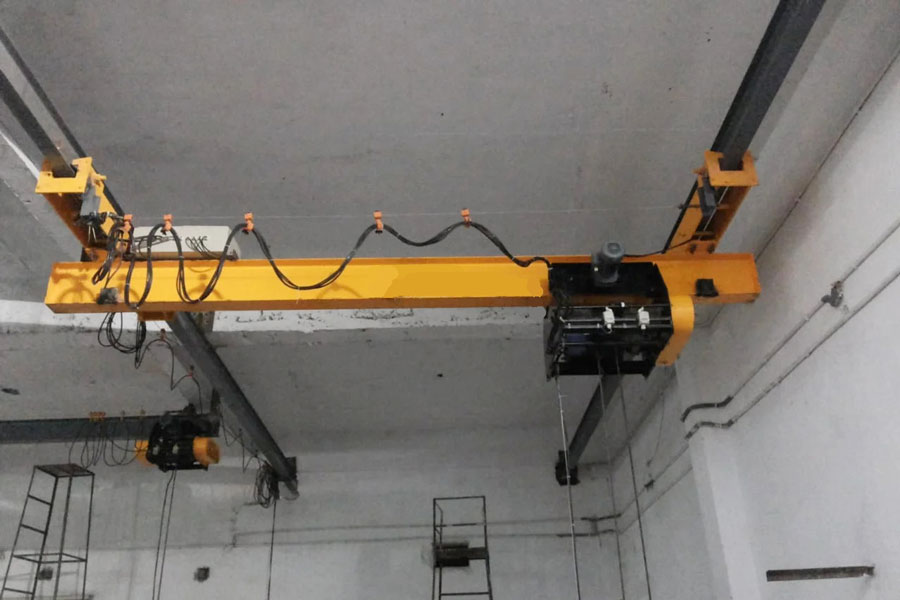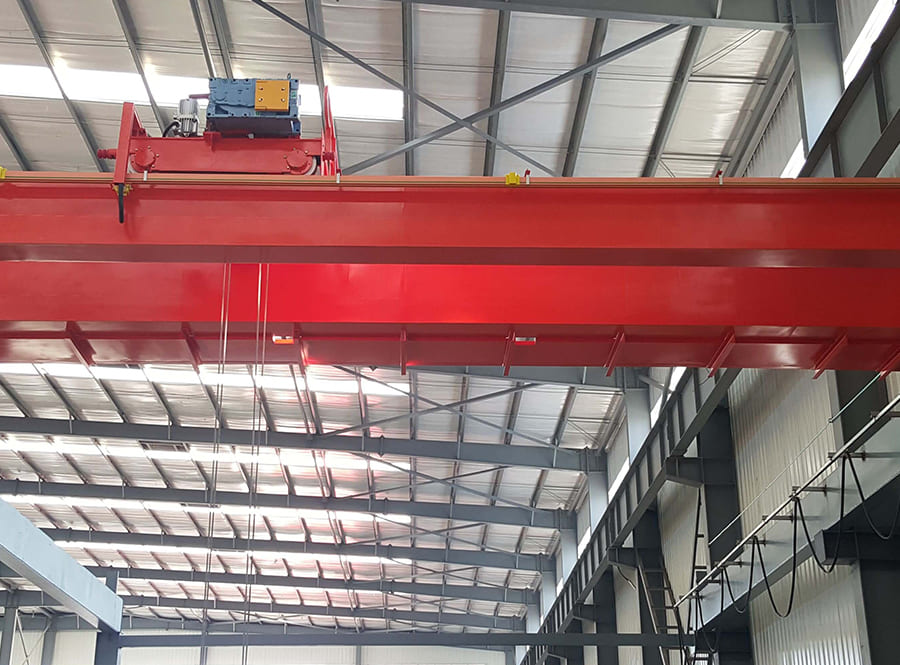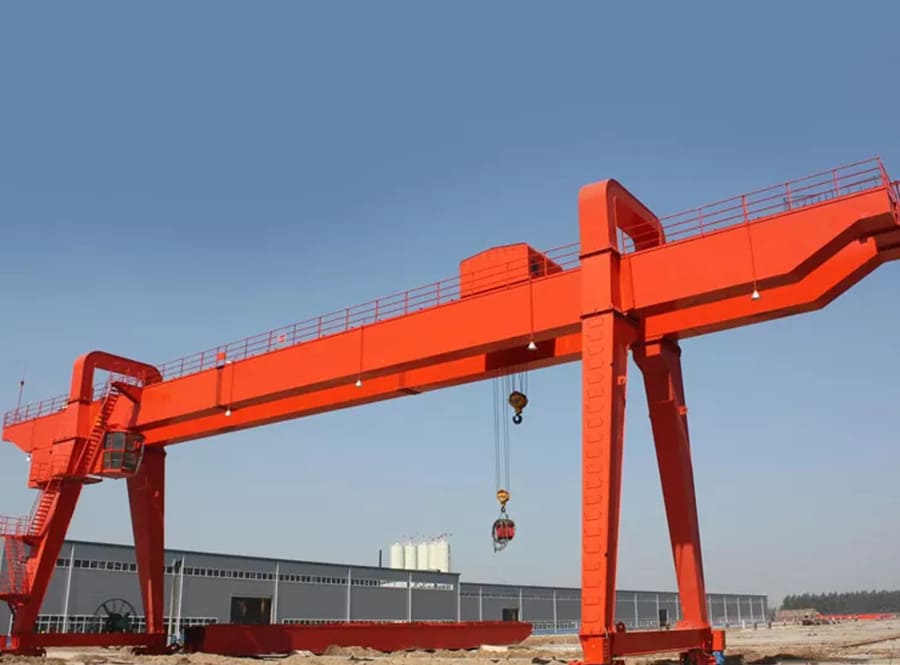An underhung crane, also known as an under-running crane or underhung bridge crane, is a type of overhead crane where the bridge (horizontal beam) is supported by the building structure, and the hoist and trolley run along the bottom flange of the bridge. Unlike top-running cranes, underhung cranes do not require a runway system or support columns on the floor level, making them suitable for facilities with limited headroom or space constraints.

Here are some key features and characteristics of underhung cranes:
- Bridge Structure: The bridge of an underhung crane is typically a single girder configuration, consisting of a horizontal beam that runs parallel to the building structure. The bridge is suspended from the roof or overhead support structure using hangers or suspension rods.
- Hoist and Trolley: The hoist and trolley assembly is mounted on the bottom flange of the bridge. The hoist is responsible for lifting and lowering the load, while the trolley moves horizontally along the bridge, allowing the load to be positioned at different points within the crane’s coverage area.
- Smooth Travel: Underhung cranes offer smooth and precise movement due to the low friction provided by the bottom-running trolley system. This allows for efficient load handling and positioning.
- Compact Design: Underhung cranes have a compact design that requires less vertical space compared to top-running cranes. This makes them suitable for facilities with low headroom or obstructions on the ceiling.
- Flexible Coverage: Underhung cranes can provide full coverage of the working area underneath the bridge by extending the trolley and hoist beyond the bridge span. This allows for efficient material handling within a defined workspace.
- Light to Medium Duty Applications: Underhung cranes are commonly used for light to medium duty applications where the load capacity is typically up to a few tons. They are often found in manufacturing facilities, workshops, warehouses, and assembly lines.
- Customizable Options: Underhung cranes can be customized to suit specific application requirements. They can be equipped with various features such as variable speed controls, radio remote controls, and specialized lifting attachments to enhance efficiency and safety.
When using underhung cranes, it is crucial to prioritize safety to prevent accidents and ensure the well-being of workers. Here are some common safety considerations when operating underhung cranes:

- Operator Training: Only trained and authorized personnel should operate underhung cranes. Operators should receive comprehensive training on crane operation, including understanding the controls, load capacities, and safety protocols. They should also be familiar with the specific features and limitations of the underhung crane being used.
- Inspection and Maintenance: Regular inspection and maintenance of underhung cranes are essential to ensure their safe operation. This includes inspecting the crane components, such as the bridge, hoist, trolley, and electrical systems, for any signs of damage, wear, or malfunction. Any issues should be promptly addressed and repaired by qualified technicians.
- Load Capacity and Limitations: It is crucial to adhere to the load capacity limits specified by the manufacturer. Overloading an underhung crane can lead to structural failure, endangering personnel and causing damage to the equipment. Proper load assessment should be carried out before lifting to ensure the load is within the crane’s rated capacity.
- Clearances and Obstacles: Ensure that there is sufficient clearance between the crane and any obstructions, such as walls, beams, or equipment. Adequate clearance should be maintained to prevent collisions and allow for safe movement of the crane and load.
- Secure Load Attachment: Properly secure the load to the hoist’s lifting attachment, such as hooks, slings, or specialized lifting devices. Verify that the load is securely fastened before lifting to prevent accidents or load instability during operation.
- Fall Protection: Workers involved in the operation of underhung cranes should wear appropriate personal protective equipment (PPE), including hard hats, safety glasses, and high-visibility clothing. Fall protection measures, such as proper harnessing and positioning on the crane, should be in place for workers accessing the crane or working at heights.
- Communication and Signaling: Establish clear communication protocols between the crane operator and workers on the ground. Use standardized signals or radio communication to ensure effective communication during crane movements.
- Emergency Stop and Response: Underhung cranes should be equipped with an emergency stop button that can quickly halt crane operations in case of an emergency or hazardous situation. Operators should be familiar with emergency response procedures and know how to safely and efficiently respond to emergencies.
- Environmental Considerations: Consider environmental factors such as wind, rain, or extreme temperatures when operating underhung cranes outdoors. Adhere to specific safety guidelines for outdoor crane operations and take necessary precautions to ensure safe operation in varying weather conditions.
It is important to consult applicable regulations and guidelines, as well as the manufacturer’s recommendations, for specific safety considerations and requirements related to underhung crane operations in your region.





















